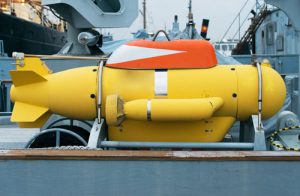In recent years, the use of satellite imagery has helped researchers and scientists gather a clearer understanding of the effects El Nino, tidal and climate change, water pollution and predatory creatures have had, and are having, on our ocean system.
The satellites have been able to gather information on the health of the coral reefs, and are providing a clearer understanding the health of one the earth’s greatest Eco-systems
Along with that, advancements in robotics and their use is also helping us to gain further understanding of the world beneath us.
Marine robotic vehicles, including underwater gliders, autonomous underwater vehicles (AUV’s), and autonomous surface vehicles (ASV’s) now offer scientists improved access to the ocean, allowing them to better understand and measure marine environments. Marine robotic systems are critical for many defense and industrial applications, including environmental monitoring, surveillance and mine countermeasures.
The environment of the ocean offers a challenging laboratory in which robotics researchers can develop and evaluate new techniques in sensing, actuation and autonomous control. As a result, scientists, researchers and engineers are working to deploy a network of robotic ocean observatories that will expand the quantity and quality of data available not only to teams working on understanding the changes within the ocean, but also to the public worldwide. Having the clearest precision lens for this type of robotics is an essential part of the equipment.
In 2009, The U.S. Integrated Ocean Observing System, through Rutgers University, carried out the trans-Atlantic journey. The glider, better known as The Scarlet Knight, is an eight-foot autonomous underwater glider that traveled from New Jersey to Spain, tracing Columbus’ 517 year old trek of the Pinta. The data collected has helped scientists better understand how climate change is affecting the ocean.
The Deepwater Horizon oil spill in the Gulf of Mexico in 2009, was the first U.S. Oil spill where glider technology was applied.
Wave Gliders are built with a battery pack, sensor arrays, a GPS unit and wireless and satellite communication systems. They are all powered by two off-the-shelf solar panels that cover the top of the glider. As a result of the ‘green’ technology from which the gliders are built, they are becoming a hot topic for oil companies, climate scientists and the Military.
Glider Robotic Technology has the potential to expand our understanding of our Ocean system, just as the Hubble Telescope unlocked our knowledge of the Cosmos. Understanding our largest Eco-system has the potential to unlock the mysteries of the deep, predict deep water earthquakes, determine fishing patterns, and more.
Precision lenses manufactured to exact specifications would transmit the clearest images available to further study our underwater world. Universe Kogaku designs and manufactures optical lenses for Oceanic Robotics, security, high tech and electronic applications. We stock 1000’s of standard lens assemblies and can custom design a solution for scanners, CCTV, CCD/CMOS, medical imaging, surveillance systems, machine vision and night vision systems.